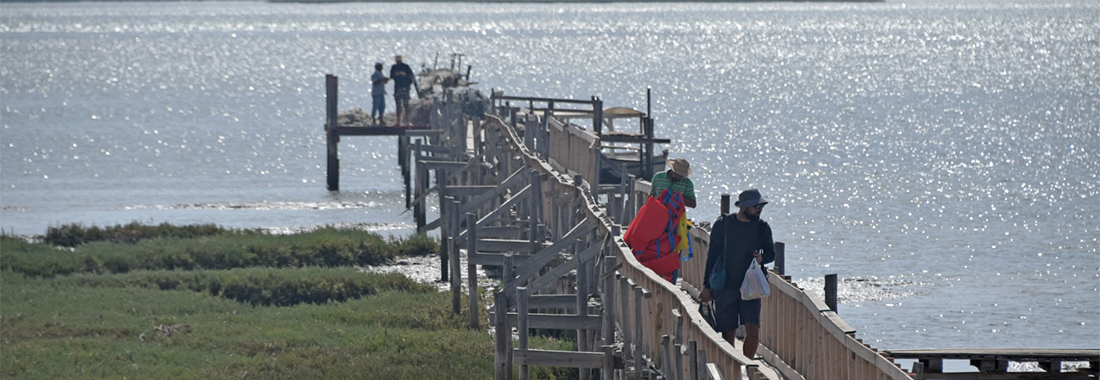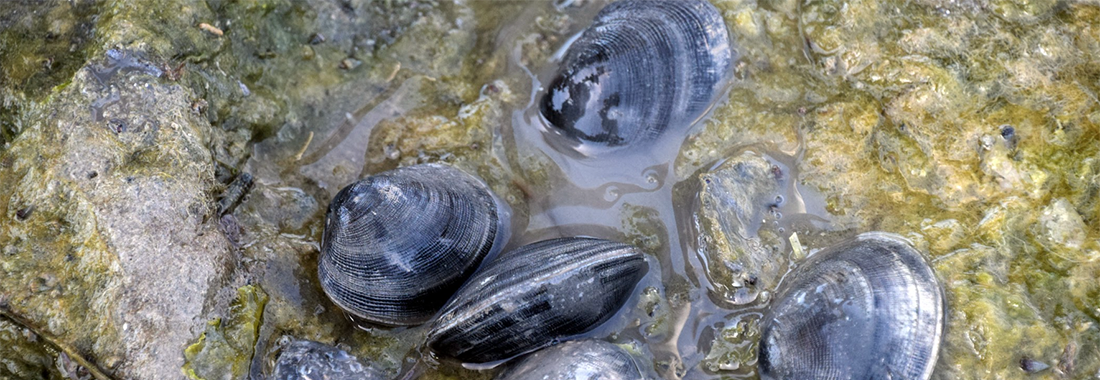After a careful study and preparation phase, the ENSERES project, of which the MEDSEA Foundation is a partner, begins to operate concretely in the two pilot sites of Sfax and Tire. Thanks to the funding provided by the ENI CBC MED project, several actions have been selected that will allow local civil society organizations to promote the management and sustainable development of the SPAMI (Specially Protected Areas of Mediterranean Importance) of these two splendid natural areas of Tunisia and Lebanon. The Sfax municipality complex and the Tyre Nature Reserve are home to numerous plant and animal species and, despite the strong impact of human activities, are an important source of ecosystem services. Sub-contributions represent the first step for an integrated management of these protected environmental areas, capable of balancing the needs of the environment and economic development.
In Tunisia, ACG, the Association for the Community of Generations, was awarded one of the loans. The project has been renamed "Kneiss Shining", and aims to create a sustainable path that, through the well-being of mind and body, enhances the beauty and economy of this natural paradise. All the places and activities that already characterize the area will be put into a system: the cycling circuit, the paths dedicated to fishing, the scientific path, the fields that host sustainable agriculture. Visitors, who will also be able to cross the route on brand new bicycles, will be guided by a series of signs indicating the most beautiful and significant places from an environmental point of view. It will be easier to meet those who experience the extraordinary nature of the Kneiss Islands on a daily basis, walk slowly around the places and learn about the activities that characterize the area, especially fishing and agriculture. To support the novelty of the project there will also be a video and a parallel QR code path together with an Android application that will reveal the secrets and opportunities of the place to eco-tourists.
In the Kneiss Islands women are at the center of the "FAIKA" project, developed by AFDIL, the Association of Women for the Development of Islands and Coasts. FAIKA was created to respond to the closure, by the Tunisian government, of the traditional clams fishing. Here, for centuries, women had, thanks to the traditional "fishing on foot", found a way to contribute to the family income and at the same time carve out a space for emancipation. In response to the blockade, the women turned their attention to another species, the solen marginatus, known locally as the "knife". However, the fishing activity is not subject to any type of control, and harvesting presents the same risks as that of clams. Furthermore, poor knowledge of the product makes women prone to intermediary traders who end up taking advantage of their hard work. Starting from an analysis of the stocks that revealed an important presence of Solen marginatus in the stretch of coast of Khawela and on the island of Bassila, AFDIL will contribute to building an alternative and sustainable fishing model together with local fishermen.
In Lebanon, the most interesting project is the one that aims to preserve and relaunch the ancient springs of Ras al-Ain. Ras al-Ain is a spring that has been supplying water to the center of Tire for millennia through its fountains, wells and over six kilometers of aqueduct. Discovered in Phoenician times, spring water was then channeled and made more usable by the Romans. An engineering work of extraordinary avant-garde, a precious archaeological heritage that time and neglect have ended up wearing down. Knowledge of the site's environmental and artistic value has been lost, and this in turn has allowed some private individuals to threaten the site with the possibility of new construction. The ACE project envisages the collection of all scientific material concerning Ras al-Ain, an activity that will be accompanied by field surveys and meetings with all local stakeholders. A geological and hydrogeological study will then allow a better knowledge of the territory and the definition of a clear cartography. The entire study will then be used for the preparation of communication materials that will support an awareness campaign aimed at the local population, stakeholders and all visitors. Information panels will be created, with scientific and educational content, placed in strategic points of the site. A strategy will also be proposed that can enhance artesian water resources, promote the protection of fresh waters and combat pollution and climate change.
Latest news

DEEP DIVE: The Alarming State of the Ocean – Inspiring Action and Searching for Solutions (Webinar)
In celebration of World Ocean Day, MEDSEA invites you to the online event "Deep Dive: The Alarming State of the Ocean", a detailed analysis of the challenges that oceans are…

Fire Monitoring Test successfully conducted in Santu Lussurgiu thanks to IoT Technologies
At the end of April, a major breakthrough in fire prevention technology was achieved in the forests of San Leonardo. Thanks to pre-fire detection sensors, an IoT (Internet of Things) technology developed and…

REST COAST, at the annual meeting in Groningen, demonstrates the effectiveness of natural restoration of aquatic systems
The standstill of the Nature Restoration Law, the European law on nature restoration, stalled in its final approval phase in the Council due to the hesitations of some Member States, has…

TransformAr makes a stop in Finland for the sixth Consortium Meeting
In mid-April, the sixth Consortium meeting of the H2020 TransformAr Project was held in Lappeenranta, recognized as the Climate Capital of Finland. This city truly exemplifies sustainability, with 100% of waste recycled and all…

Launch of the PLASTRON Project in Genoa: A Cross-Border Initiative for the marin Plastic & Paper Recycling
The PLASTRON project is about to start. With the goal of improving the sustainability of local communities by providing knowledge and tools for collecting and transforming plastic from the coast…

Wetland4Change to Address Climate Change with Wetlands, Kickoff in Sofia
Last week, hosted by the University of Forestry in Sofia, the kickoff of "Wetland4Change" took place, marking the start of an ambitious Interreg Euro-MED project within the Natural Heritage Mission aimed at…

The Capo Carbonara Marine Protected Area towards a New Zoning with Blue4All
A new co-management model to reorganise marine protected areas, benefiting from all the tools and knowledge provided by the Blue4All project will be soon implemented in Sardinia. Later last month, preliminary meetings…

TransformAr, Adaptation Pathways to Climate Change for Fishing Validated, All Set for Sensor Installation
TransformAr enters its most operational phase at the pilot site in Oristano where, in March, the MEDSEA team met with the Municipality of Terralba and the fishermen of the San Giovanni Lagoon from the Marceddì Consortium to…

Revitalizing the Mediterranean: ARTEMIS Project Unites Environment and Innovation
March marked the launch of "Artemis", a project of the Interreg Euro-MED Programme that seeks to combine the ecological benefits of seagrass with innovative financial strategies, such as Payment for Ecosystem…

Petit Noirs: From Senegal to Arborea to Combat Illegal Immigration with Mussel Farming
Sustainable mussel farming in Arborea becomes an international example with a project linking Dakar, Senegal, with Sardinia, aiming to combat illegal immigration and generate economic opportunities.

The Charm of Wetlands in Sardinia: Over a Thousand Visitors in the World Wetlands Day Event Calendar in Sardinia"
With over 30 events, from January 27 to March 10, 2024, the MEDSEA World Wetlands Day in Sardinia comes to a close. The initiative, which falls in the month when wetlands are…

First Meeting of the DesirMED Project in Venice: A Step Forward in Climate Adaptation in the Mediterranean
Last month, the historic city of Venice hosted the first meeting of DesirMED, a project funded by the HORIZON Europe program aimed at addressing one of the most pressing challenges of…

Sails Towards the Future: The UniCa Sailing Team and the Challenge of Eco-Sustainable Boats in Sardinia
In Sardinia, circular and low-impact solutions for water sports and sailing are being studied. The University of Cagliari, together with the UniCa Sailing Team, is working on the construction of an…

The first General Assembly kicked off in Lecce: for a more resilient MPAs network
The first General Assembly of the "Blue 4 All" project took place in Lecce from January 23 to 26, 2024. The event, hosted by the CMCC Climate - Euro-Mediterranean Center on Climate…

It's Time to Celebrate Wetlands: join World Wetlands Day Sardegna 2024
In Sardinia, February is the month of wetlands! We celebrate World Wetlands Day on the occasion of February 2nd, which marks the 53rd anniversary of the establishment of the RAMSAR Convention for…

TransformAR Reaches Halfway: The Progress in the San Giovanni Lagoon
TransformAR, at the pilot site of Marceddì-San Giovanni (Terralba) in Sardinia, one of the six demonstration sites of the project, is gaining momentum. The project, which develops transformative adaptation solutions to climate change…
- 1
- 2
- 3
- 4



